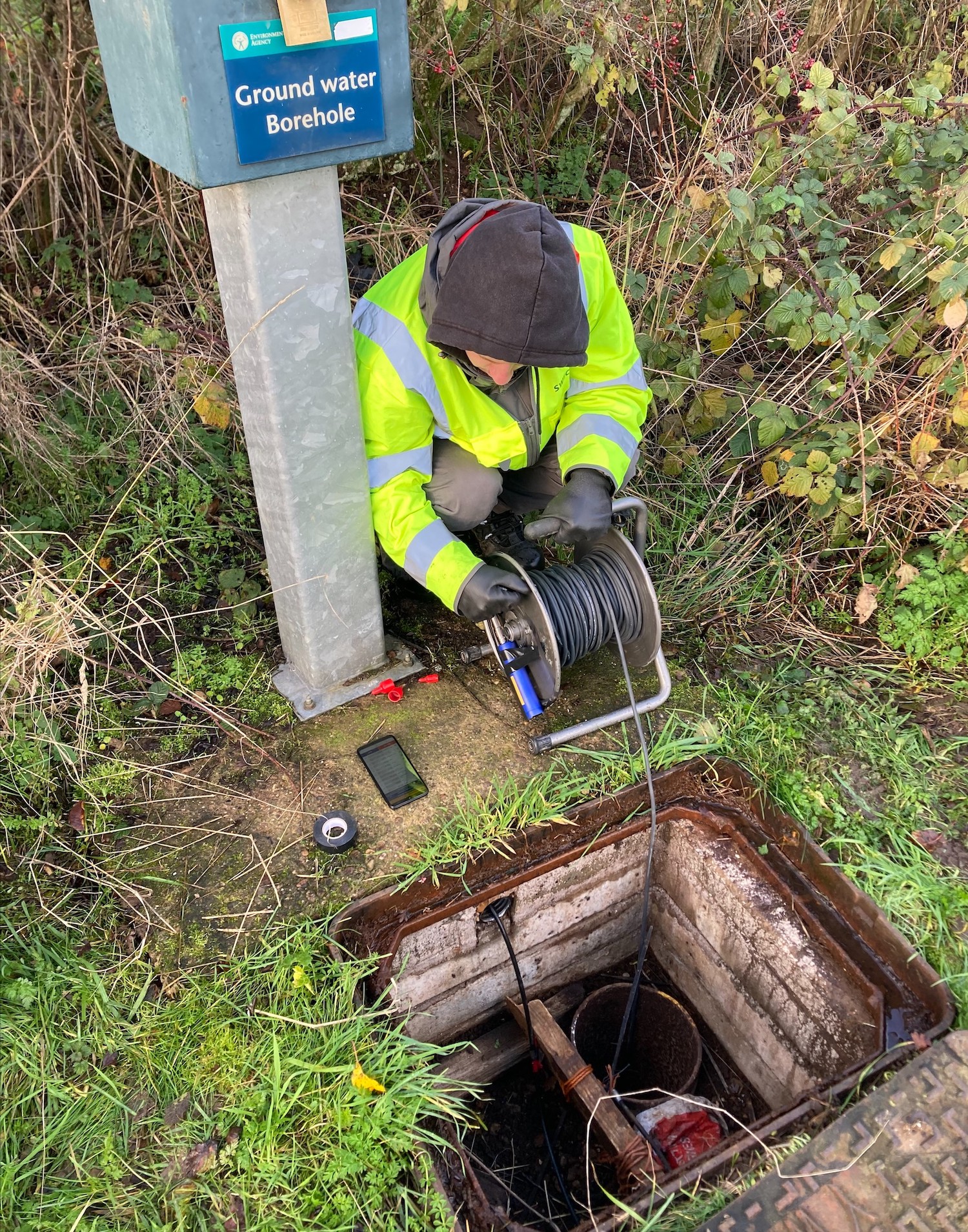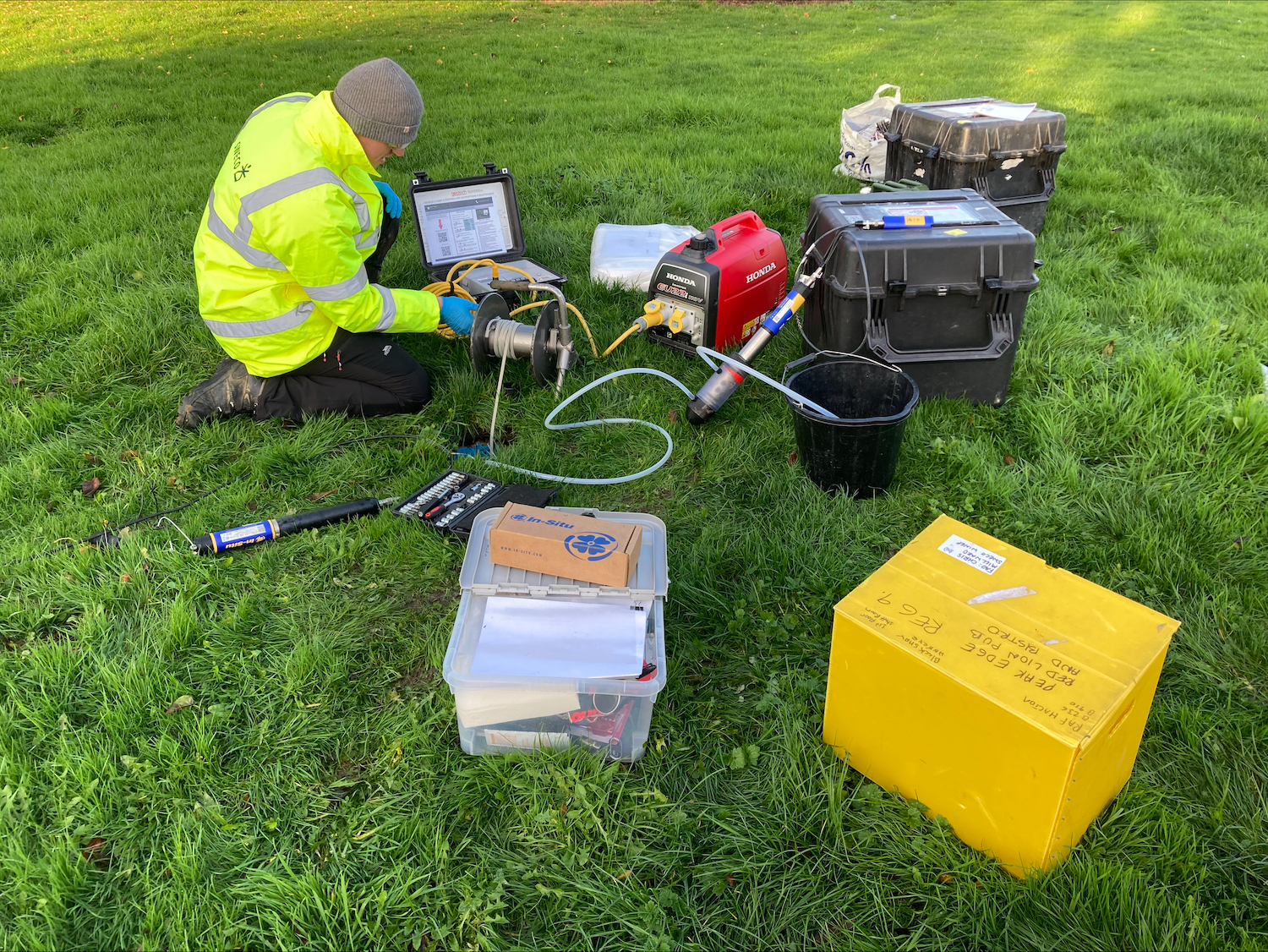
Harriet Carlyle
Coastal groundwater systems are a vital resource for many communities around the world. However, they are also highly vulnerable to a range of environmental factors, including rising sea levels, changing precipitation patterns, and human activities such as groundwater pumping. To understand and manage these systems effectively, it is essential to have a solid understanding of hydrogeology – the science of how water moves through the earth’s subsurface.
We have been in touch with Dr Harriet Carlyle, Technical Director (Hydrogeology) at Sweco (UK), to explore the fundamentals of hydrogeology in coastal groundwater systems and discuss how this knowledge can be used to protect this valuable resource.
What Is Hydrogeology?
Hydrogeology is the study of groundwater. Groundwater is located in underground aquifers, composed of rocks and sediments that hold a large amount of water. It feeds springs, rivers, lakes, and wetlands, flows into estuaries and the sea, and can be pumped to the surface from wells and boreholes.
Rain and melted snow seep into the ground, either directly or indirectly, from rivers to help recharge and replenish groundwater stores. So, aquifers effectively act as giant reservoirs of water.
Groundwater may be out of sight but should not be out of mind. The impact of groundwater is visible everywhere, and it is everywhere under our feet.
What Is the Need for Groundwater Systems?
As almost all the liquid freshwater on Earth is groundwater, and life would not be possible without it. Groundwater supplies much of the water we use for drinking, sanitation, agriculture, and industrial applications.
Groundwater systems are critical in the driest parts of the world, as they may be the only water people have. In the UK, groundwater provides approximately ⅓ of all public water supplies in England and makes a significant contribution in Wales and Scotland.
In times when there is no rainfall/precipitation, groundwater keeps many of our rivers flowing throughout the year through springs and seepage, allowing access to this valuable resource as well as maintaining ecosystems. Well-known examples are the chalk streams found in England, which campaigners like Seán Feargal Sharkey OBE have highlighted. These are almost entirely dependent on groundwater from chalk bedrock and are renowned for their clear water, unique habitats and fisheries. River water can disappear into the ground and reappear far away, having travelled underground through cave systems.
Groundwater also maintains nationally important wetlands across the country, often giving rise to distinctive ecosystems dependent on the natural chemistry of the groundwater as well as on water levels.

Saline intrusion investigation – borehole conductivity profiling
Threats to Groundwater Systems
Unfortunately, in some places, human activities pollute groundwater, making it unusable. Over-application, spillages, and deliberate dumping of fuels, solvents, and other harmful chemicals, particularly since the industrial revolution, remain an issue, whilst emerging contaminants such as personal protective products, pharmaceuticals, and even microplastics present new threats.
In rural areas, the over-application of fertilisers has caused groundwater pollution on a regional scale, exacerbated by contamination of herbicides and pesticides from poor application and storage. While many of these are now banned, they remain in groundwater.
The scientific discovery of climate change/global warming began in the early 19th century, and since then, there has been enough evidence to show that climate change increases the likelihood of drought. A rise in drought events increases our reliance on groundwater for water supply as springs, rivers, and reservoirs dry up. Reduced rainfall and increasing evaporation also mean less opportunity for groundwater recharge.
Another issue that groundwater faces is over-exploitation. Abstracting more groundwater than can be recharged lowers groundwater levels in aquifers, reducing water supply to springs, rivers and wetlands, as well as increasing the risk of land instability and subsidence. In terms of groundwater abstraction, there may be increased energy and carbon costs associated with pumping from greater depths and for additional water treatment as deeper groundwater tends to have poorer water quality.
What Are Coastal Groundwater Systems?
Coastal groundwater systems are where fresh groundwater and seawater meet. More than one billion people around the world live in coastal regions, and many of these are dependent on groundwater as their main water supply. People living on small islands may rely on lenses of fresh groundwater above denser saline water for water supply.
Aquifers replenished on land may discharge under the sea or estuary, and indeed, there are stories about ships recharging the freshwater tanks from submarine springs. But what we need to know is that coastal aquifers are very vulnerable to over-exploitation, alterations to land use, and climate change. Both over-abstraction and sea level rise can reverse the direction of groundwater flow, pulling seawater under the land (seawater intrusion) and making it unfit for water supply.
Effects on coastal groundwater may also be seen in estuarine or near-shore coastal environments where a reduction in spring or submarine freshwater flows can impact marine ecosystems.
How Can We Protect Coastal Groundwater Going Forward?
Coastal groundwater needs to be much better managed, and the aquifers need to be regarded as the sensitive and dynamic systems they are. Clean groundwater is not an infinite resource.
Coastal aquifers can potentially be restored gradually through robust investigation, monitoring and management by reducing abstraction and/or increasing recharge. If groundwater levels are allowed to recover such that the direction of groundwater flow is no longer inland, then groundwater quality may also gradually improve so that the aquifer again becomes a viable water supply for both human use and the natural environment.
As an example, Sweco’s hydrogeologists are currently assisting Yorkshire Water on a saline intrusion investigation of the chalk aquifer that supplies the city of Hull (UK), as previous studies have suggested that saline intrusion is continuing to occur.
Sweco’s investigation aims to confirm the extent and movement (if any) of the saline groundwater, the potential sources of salinity (modern seawater intrusion, migration of old saline water arising from seawater inundation thousands of years ago and/or modern anthropogenic inputs such as fertiliser and salt spreading) and identification of options to manage the salinity should this be attributable to over-abstraction.
How Sweco Is Becoming Part of the Solution to Society’s Sustainability and Carbon Reduction Challenges
Sweco (UK & Ireland) is hoping to reach net zero by 2030. Sweco is in a unique position to not only design the cities and communities of the future that are sustainable but also to collaborate with partners, clients and key stakeholders to help transform society for the better.
Sweco’s team of sustainability experts share their knowledge on climate change with clients and professional organisations. Sweco understands that more must be done to prevent ecological disaster, and fast. That is why Sweco is concentrating on its environmental, social, and governance goals over the next five years and aiming to be net zero by 2030, which is 10 years ahead of the pledge to net zero’s deadline of 2040. As a result, Sweco hopes to become the go-to environment partner for clients who want to reach their climate goals per local and global regulations.







